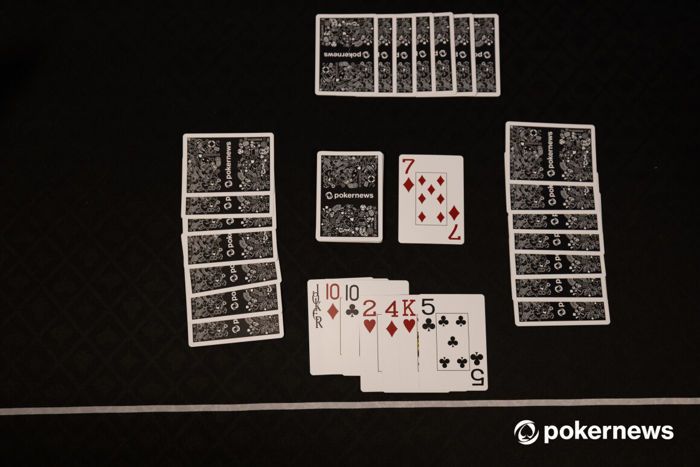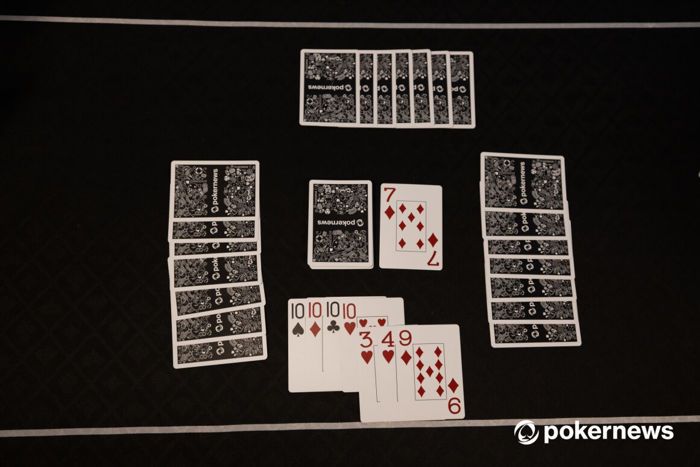Rummy Sequences and Sets

In Rummy, mastering the concepts of sequences and sets is essential to becoming a good player. Sequences, involving consecutive cards of the same suit, and sets, comprising cards of the same rank, form the bedrock of valid melds.
This PokerNews article delves into the significance of understanding and creating these melds, highlighting their foundational role in successful Rummy play. As players navigate the intricate world of sequences and sets, they unlock the key to building winning hands and mastering the art of Rummy.
Basic Rules of Creating Sequences and Sets
Mastering Rummy sequences and sets begins with understanding the basic rules. A sequence is a group of three or more consecutive cards of the same suit, while a set is a group of three or four cards of the same rank. Players need to arrange their cards in either sequences or sets to create a valid meld. It's crucial to differentiate between pure and impure sequences. A pure sequence is formed without the use of a Joker, while an impure sequence can include a Joker.

Unmatched cards play a significant role in Rummy. These are the cards that do not belong to any valid meld. While they don't contribute directly to a player's score, minimizing the number of unmatched cards is a strategic move. Managing unmatched cards effectively enhances a player's chances of going out first, thereby minimizing points in their hand. Understanding and applying these basic rules are fundamental steps towards becoming a skilled Rummy player, enabling individuals to create optimal melds and improve their overall gameplay.
Tips for Efficiently Creating Sequences and Sets in Rummy
Efficiently creating sequences and sets in Rummy requires strategic meld planning and a keen eye for opportunities. One key strategy is to plan melds early in the game. Analyze the cards you've been dealt and identify potential sequences or sets that can be formed. By planning ahead, you can make more informed decisions during the game.
Recognizing opportunities is crucial. Keep an eye out for discarded cards that could contribute to your melds. If a player discards a card that completes a sequence or set you are working on, you can use it to your advantage. Additionally, pay attention to the cards picked up by opponents, as this can provide valuable information about their melds.

Balancing the creation of sequences with discarding unwanted cards is a delicate art. While working on forming your melds, you'll inevitably come across cards that don't fit into your plans. Discarding these unwanted cards strategically is essential. Consider the potential use of these cards by your opponents and try to minimize the risk of aiding their melds.
Efficient meld planning, seizing opportunities, and carefully managing discards are integral components of creating sequences and sets in Rummy. By mastering these strategies, players can enhance their ability to build optimal melds, increasing their chances of success in this dynamic and strategic card game.
Advanced Techniques for Sequences and Sets
For experienced Rummy players seeking mastery in sequences and sets, advanced techniques in meld optimization become important. One key strategy involves adapting your approach based on the evolving dynamics of the game. Assess the cards in play, observe opponents' moves, and dynamically adjust your meld planning. This adaptability is crucial for staying ahead in a game where circumstances can change rapidly.
Meld optimization at an advanced level goes beyond the mere creation of sequences and sets; it involves maximizing points through strategic planning. This includes not only forming high-value melds but also capitalizing on opportunities to disrupt opponents' plans. Skilled players aim not only to enhance their own scores but also to hinder their competitors, showcasing a deeper understanding of the game's intricacies.
Another advanced technique is understanding when to be aggressive or conservative in meld creation. Depending on your position in the game and the points at stake, deciding whether to pursue high-scoring melds or opt for safer, lower-value combinations becomes a critical aspect of advanced play. This nuanced decision-making sets expert players apart and adds a layer of complexity to their strategic approach.

To conclude, advanced techniques for sequences and sets in Rummy go beyond the basic rules of the game. They encompass a sophisticated understanding of the game, incorporating adaptability, point maximization, and strategic decision-making. By mastering these advanced strategies, players can elevate their Rummy skills to a higher level of proficiency and competitiveness.
Want to keep learning about Rummy?
- Mastering Rummy Strategy
- Mastering Rummy Discard Strategy
- How to Keep Score in Rummy
- Rummy Tournaments
- Rummy Joker Rules
FAQs - Rummy Sequences and Sets
What is the difference between a pure sequence and an impure sequence in Rummy?
In Rummy, a pure sequence consists of consecutive cards of the same suit without the use of Jokers, while an impure sequence allows the inclusion of Jokers to complete the sequence. Distinguishing between the two is fundamental for strategic melding.
Can I use a Joker to complete a pure sequence in Rummy?
No, Jokers cannot be used in the creation of a pure sequence. Pure sequences must be formed without the assistance of Jokers, emphasizing the skill aspect of the game.
Is it necessary to have a set to win in Rummy, or can I win with just sequences?
While sequences are essential, having at least one set (three or four cards of the same rank) is typically necessary to declare victory in Rummy. Sets contribute significantly to the overall points required for a successful meld.
How do I maximize points through strategic melding of sequences and sets?
To maximize points, focus on creating high-value sets and sequences. Look for opportunities to use Jokers strategically, and consider the points associated with each card. Disrupting opponents' plans while enhancing your own melds adds another layer to strategic play.
What should I do if I have unmatched cards while creating sequences and sets in Rummy?
Managing unmatched cards is crucial. Aim to discard such cards strategically, preventing opponents from benefiting. An effective strategy involves minimizing the impact of unmatched cards on your overall game plan.
